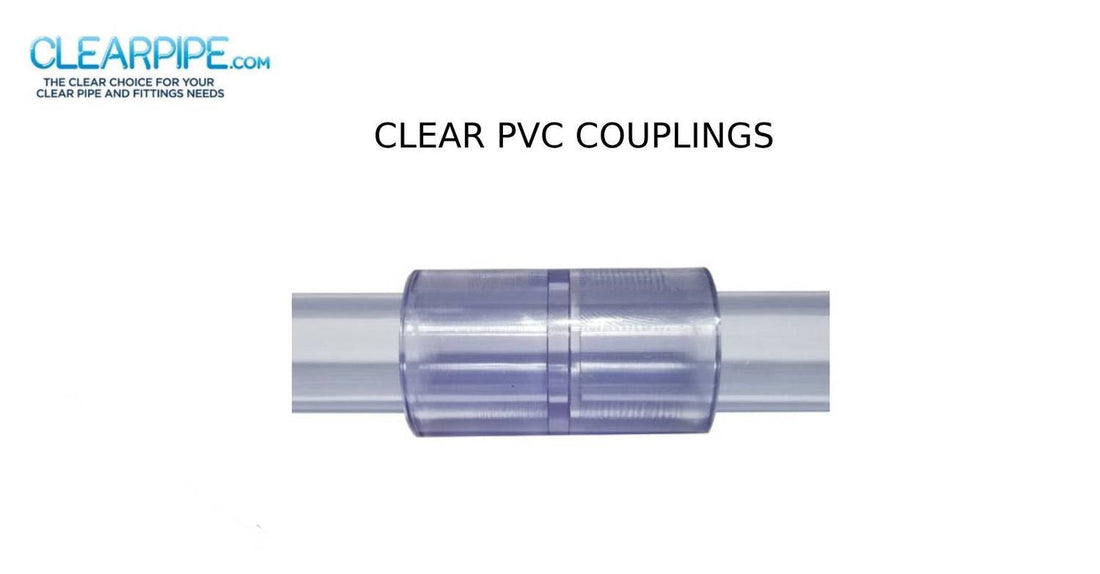No matter whether you work on a domestic plumbing project or you have a commercial installation, PVC couplings play a fundamental role when you need to join one section of pipe to another. These fittings are hailed as being tough, chemically resistant and user friendly. We will take you step-by-step through the installation procedure of PVC pipe fittings in this comprehensive how-to guide, and look at the various types of pipe fittings, and give you some ideas for working with PVC pipe fittings that have to be used in applications where visibility is important.
What are PVC Couplings?
PVC couplings are short connectors that are utilized to connect two pieces of PVC pipes in a straight path to each other. They are applied as far as in residential plumbing systems and industrial fluid handling. A majority of them are solvent welded (glued) whereas others are threaded so that they can be removed easily and serviced.
PVC Couplings Types
It is important to be aware of the different types of PVC couplings you can use before starting the process of installation:
- Standard Couplings: The couplings have been used to assemble two pipes of the same caliber.
- Minimising Couplings: Use joint pipes of diverse size.
- Slip Couplings: have a smooth inner surface to solvent weld.
- Threaded Couplings: possess internal threads that permit simple screwing onto threaded ends of the pipes.
- Flexible Couplings: These are of rubber with hose clamps and connect to an irregular or shifting connection.
- Clear PVC Couplings: Clear couplings that are suitable where there is need to view the system e.g. in aquariums or in a lab.
List of Equipment and Materials Required:
- PVC pipe and couplings
- PVC primer and cement
- A pipe cutter or hacksaw
- Tape measure
- Marker
- Sandpaper or a deburring tool
- Gloves and eye protection
Installation Procedure of PVC Pipe Couplings
1. Measure and trim the Pipe
Measure the area, where your PVC coupling is going to be placed and cut the pipe using a pipe cutter or fine toothed saw. Attention must be paid to a straight and clean cut.
2. Des burr and clean the edges
Smoothen the edges of the pipes using sandpaper or a deburring tool. Put a clean cloth on top of the pipe and coupling to wipe away dust or debris.
3. Install the Components by Air Building Dry Fit
Push the pipe through the PVC coupling and make sure that they fit. This is particularly essential in cases when one is working with transparent PVC couplings in which alignment counts as far as the eye is concerned.
4. Primer with PVC
Put PVC primer on the exterior of the pipe end and interior of the coupling. This makes the plastic plastic deform where the bond is enhanced.
5. Use PVC Cement
Then straight away prime on the same surfaces over a thick coat of PVC cement. As you insert the pipe in the coupling, use a quarter twist movement to seal the pipe and the coupling together.
6. Hold and Cure
Hold the joint together for about 30 seconds to prevent push-out. Let the joint cure for at least 15 minutes before moving, and allow a full cure time of 24 hours before using under pressure.
Special Hints for Clear PVC Couplings
- Resist too much primer and cement in order to have a neat cosmetic appearance of the clear PVC coupling.
- Check regularly for bubbles or alterations of alignments via the transparent body.
- Excellent as a flow detector or leak detector.
Last-minute Checks and Testing
After installing, you need to power on your system gradually and look out any leak in your PVC pipe couplings that may have developed. In clear PVC couplings, the integrity of flow and fittings can be checked visually. For more details, visit: Clear Pipe
Pro Tip: Don't forget the Right Coupling Pro Tip: Don t forget the Right Coupling
The correct type of PVC coupling will enable long-life possessions and give the proper working capacity.
For example:
- Apply soft couplings near such places where shifting or vibration can occur.
- Apply liquid PVC couplings in a laboratory, or aquarium or health care.
- Select threaded couplings whenever there is a possibility of dismantling.
Conclusion
When correctly equipped and educated on the fundamentals of PVC couplings, the task of their installation is rather simple. The PVC couplings that you apply (standard, reduced or clear) should be treated properly: by following the proper procedure a lasting and safe bond can be achieved. Ensure that you use the right kind of PVC coupling in your project and you are guaranteed a long lasting system that can easily be maintained and checked.
Looking to purchase good PVC fittings? See our large inventory of PVC pipe and clear PVC couplings - ideal in residential, commercial and industrial uses.

